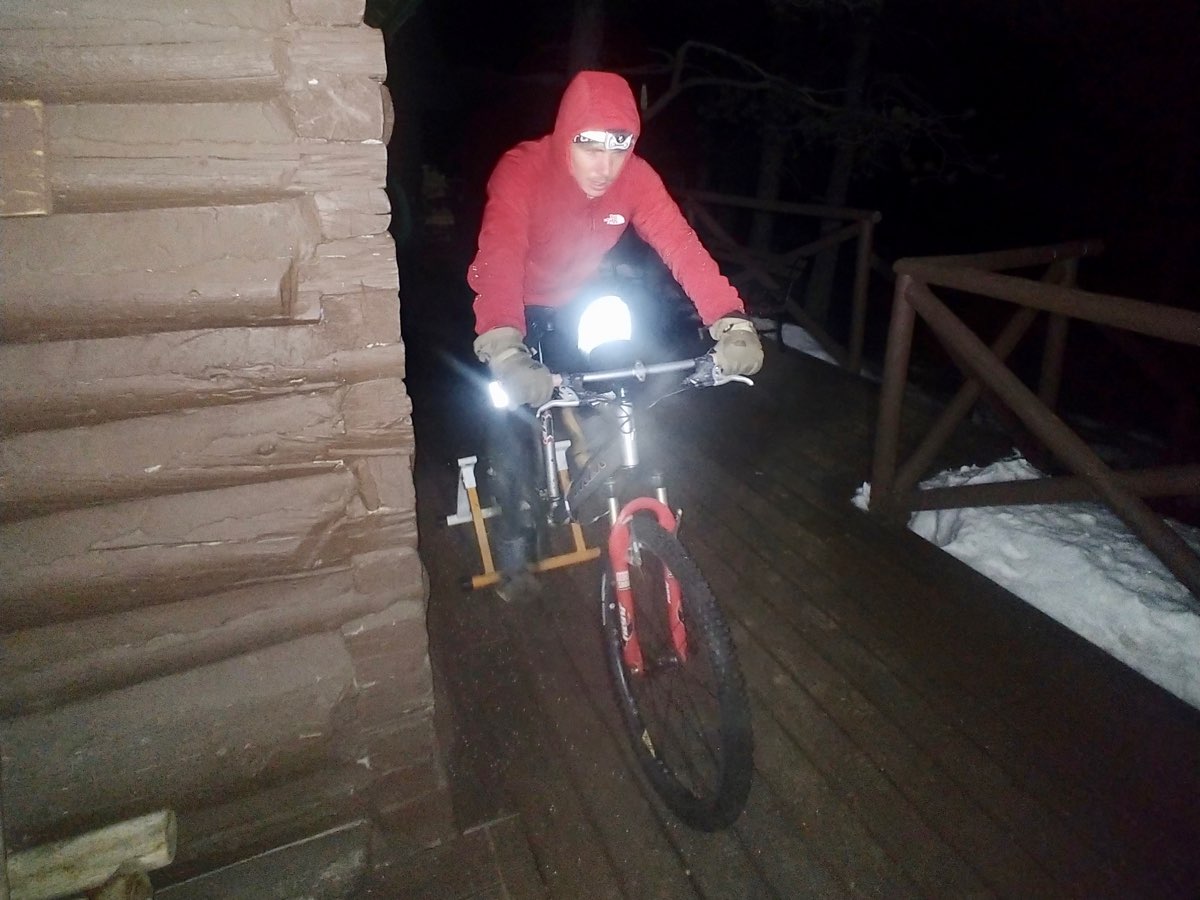About a year ago, I developed a knee injury. At first I kept running as normal, hoping the pain would subside and the knee would heal. For a bit it seemed like this method might work. Then, one day, part way through a run, the pain became intense enough that I could barely run. I grimaced my way home feeling frustrated. I wanted to run fast and free, not hobbled and pain-filled. But this time, pain was my reality.
I decided to take a few easy days, and eventually, a couple of days off from running altogether. During this time I tried to be productive by doing my taxes and Barr Camp chores. After two days of zero running, I tried again. Attempting to keep my volume up, I split my training sessions between running and cycling on the bike trainer. Bit by bit the knee healed. I added more and more running back into my training regime. Eventually I laid the bike to rest, and my running routine returned in full force. By tuning in to what my body needed, I overcame the knee injury.
Fast forward to right now and I’m in a similar spot. This time, however, the issue is in my foot. Different injury, but the same song and dance. I noted my pain and continued training. On paper–or ahem, a website–it might sound a bit absurd to continue running through some pain, but this is common practice for us runners. We observe abnormalities and press on while hoping they will find their way to the exit door without our accompaniment. It’s a bit optimistic, but not entirely unreasonable. We all know that sometimes this works. During my college days it worked a lot. Things hurt, they hurt more, and then bam, they turned the corner and improved. Even in an injured state, our bodies need movement in order to heal, and sometimes we can manage to keep that movement our run training.
Unfortunately this method doesn’t always work, and sometimes an injury needs significant time away from running. As much as I wanted it to work with my knee last year, it didn’t. The same is now true with this year’s foot. Despite my efforts to stretch, roll, strengthen, and ice, my foot won’t allow me to keep running normally. Some days have been pretty good, but nothing has felt quite right, and eventually a couple of really bad days pushed me over the edge and back to the bike.
My physical therapist has said that I can keep running, that she thinks I can work my way through it, maybe do a couple of cross-training days a week but to keep up with the runs most days. That sounded good to me, but just in running back to Barr Camp after seeing the physical therapist in town, my foot hurt a lot. Since then and for the past few days, I’ve been on the bike. Last year just a few days of biking, rolling, and a knee strap were all it took to get my knee back in action. I am now hoping for similar with this foot.
I can see lessons to learn as I work to heal my foot. Lately the lesson is to keep moving up the kinetic chain. While the pain is in my foot, the root cause is quite likely to be somewhere higher up. At first we identified a lot of tightness in the calf muscles leading into my peroneal tendons. Hence, I’ve spent the past couple weeks loosening them. I’ve made a lot of progress, but now I’ve been told that my iliotibial band is tight. It seems that each time we find and work on one thing, we also discover that the next thing up the chain needs work.
This can seem crazy, the fact that your foot hurts because of something going on in your calf, quadriceps, and even your back. But if you take time to think about it, it makes a lot of sense. The body is essentially a series of chain links. With everything linked together, when something breaks, stretches, strains, inflames, locks up, or weakens, we can expect effects elsewhere in the line.
I suppose this is in part why injuries can feel so difficult to nail down and fix. It is natural to look at an issue and say, it hurts here, so this must be what the problem is. Sometimes, like in the event of a bruise or a broken bone, this really is the case. Other times the pain is manifested far from its root cause, and can be difficult to identify, even with professionals helping us get to the bottom (or top) of things. The good news is that once we nail down the source of the problem, healing quickly follows. So, being in tune with one’s body helps with this process.
As I think about all of this, I see a connection between how we approach a running injury and other life problems. I’m no expert but it’s pretty safe to say that the emotional state of a human being has its own set of chain links. Sometimes the links are pretty simple, like we feel cranky specifically because we are tired or hungry. Other times, they are more complex. The chain of command is longer and the links are tangled, missing, or broken. We don’t know exactly the source of our sadness, and perhaps its rooted in multiple causes. This can make common feelings difficult to address. Additionally, sometimes the links are easy to identify, but they have seen so much abuse that they are hard to mend. This means that some situations take a lot more time, care, and grace to sort out.
When faced with these sorts of situations in life, we can first analyze the chain of command, identify the issue, and make an attempt to fix it. Then, as we move forward we attempt to maintain the whole chain, not just the piece that had the problem, so that the whole system stays in good, working order. If done correctly, we become less likely to have the same issue again in the future.
The second thing we can do is to approach problems with grace, not just grace for ourselves but for other people as well. No matter how much maintenance we do on our minds, no matter how much we stretch, ice, and massage the grey matter between our ears, we are all a bit hobbled. Most of us collect our fair share of injuries along the way, and we all have days when we are better suited for the sideline than the start line.
Some of our experiences have made us stronger and tougher, both mentally and physically. Others have left us a bit bruised and broken, have left a bit of a kink in our mental and physical chain of command. A few dents here and there don’t mean that we are lesser humans. By embracing our struggle, learning our chains of command, and understanding our kinks, we can become stronger with the natural blows of life as an athlete and human. We become stronger for ourselves, and also for each other.
So, keep running when you can, and walk–or bike–when you must. Keep studying the chain links; keep in mind the whole chain of brain and body. Take a helping hand when needed, and when possible, give one back. It’s a long road out there. Let’s help each other stay in tune.
Call for Comments (from Meghan)
- As Zach would say, do you feel ‘tuned into’ your body and your mind?
- Have you had an experience where you were able to listen well to your body’s specific needs and adapt?


